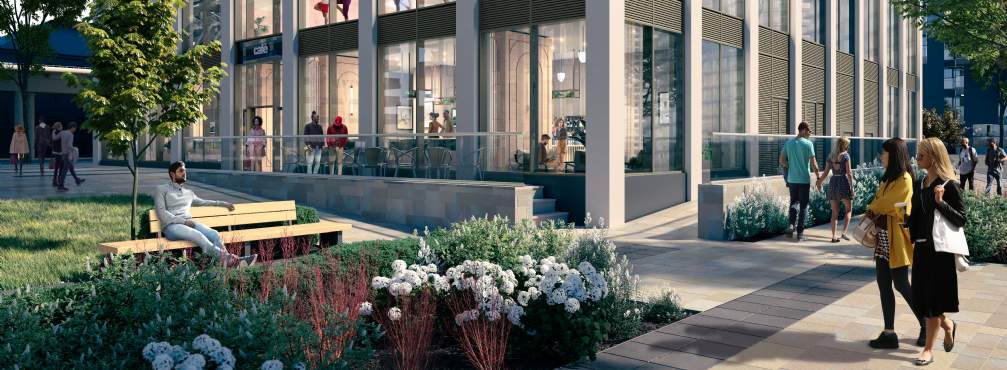CLASS DESIGNATIONS UNDER CO-LIVING
Whilst the Co-living sector is still nascent, it is nevertheless evolving at pace as developers and operators rapidly build their understanding of what the market wants. Many lessons were learned from the Covid-19 pandemic, which has further shaped what tenants are now looking for from schemes. As the sector evolves, there is also a divergence between the various use class designations that Co-living can be operated under.
The C1 Co-living model can cater for guests staying for between 1 and 365 days a year if the appropriate planning permissions are sought to allow stays over 90 days. Having the ability to house residents for less than 90 days is useful, capturing relocation as well as serviced-apartment type demand. It is worth noting however that although rooms can be charged out at a premium for shorter terms, VAT is chargeable on rents under C1.
The sui-generis shared living model requires a minimum stay of 3 months on an AST agreement, rather than a licence, and single occupancy rooms that must adhere to design guidelines. The sui-generis model is more widely recognised in planning terms and seemingly preferred if building from the ground-up.
There are a range of considerations any investor must be aware of when embarking on a Sui Generis, C1 or rarer C3 route to market, namely the different tax, yield, operational and planning regimes. The varied C1 consented model has the potential to offer more immediate access speed to market, through conversions of existing buildings whereas sui-generis shared living schemes can often take longer to get through the planning process.
Wembley Ark is one of the only schemes to have been both designed and completed post-pandemic. According to Jermaine Browne, Co-Founder of Re:shape Living, ARK Co-Living and the Second-Generation Shared Living Consortium (SGSLC):
“Two big lessons from the pandemic in terms of the design of second-generation Co-living schemes are that co-working spaces and access to outdoor amenity spaces are crucial offerings for today’s Co-living members.
As new management companies and capital partners enter the space, it will be interesting to see which of the two models (C1 Co-living or Sui-Generis) gains more traction in the market. The flexibility of the Transient C1 Co-living model may appeal to a wider range of guests and is an expedited route to operations through e.g., the repositioning of existing hotels, while the more residential Sui Generis Shared living model may be more attractive to those residents that want security of tenure. This divergence in my view indicates a healthy evolution of the Co-living market, with numerous exciting possibilities for future growth and innovation”.
WHO ARE THE RESIDENTS?
Co-living in its simplest form is purpose-built rented housing, where residents have their own self-contained studio apartment and there is lots of shared amenity space throughout the building, often including co-working spaces, gyms and cinema rooms. Tenancies typically range from 9-12 months (but can be as long as 3 years), so Co-living offers real flexibility in a way most other residential products don’t. Target residents are students, recent graduates and young professionals who want to live in vibrant urban centres, with a strong sense of community and access to amenities.
Evidence from recently completed developments provides further insight as to who lives in Co-living schemes. Scape’s Guildford Co-living offering was built alongside a purpose built student accommodation (PBSA) scheme and therefore is not allowed to cater to students. Despite this restriction, the development has been very successful in attracting local residents from diverse industries, including healthcare, gaming, and technology. The scheme has particularly benefited young professionals facing affordability pressures in Guildford's housing market, providing them with a new, secure and more flexible housing option. The success of the scheme also illustrates that Co-living isn’t limited to city centres, but can be viable in any market with strong employment opportunities.
Co-living also provides an attractive option for people moving to a new city, providing them with an ideal environment from which to establish new roots, due to tenancy flexibility and the vibrant social scene within schemes that makes it easy to meet new people. Recent evidence from completed Co-living developments in London indicates that a significant proportion of residents have relocated to the city from other locations. For instance, at Dandi Wembley, the majority of residents were new to London, with only 41% previously residing in the city. Another 24% came from elsewhere in the UK and 35% came from overseas.
CO-LIVING SCHEMES LEASE UP QUICKLY
Although there are a relatively small number of operational schemes, interviews with active players in the market show evidence of strong lease-up rates and growing rental values, indicating very strong demand from residents. Both Dandi Wembley and Folk’s Sunday Mills in Earlsfield demonstrate the speed at which schemes can be leased-up. The former leased all of its 360 beds in just 3 months, an average of 4 beds per day, while the latter let 315 beds in only 4 months, and during the typically slower winter period. These statistics demonstrate the extent of demand for the product, improving the confidence of stakeholders across the sector. Wembley Ark scheme highlights how it is also possible to drive strong pricing growth through lease-up strategy.
Ark Co-Living took a measured phased approach to pre-let and post opening lease-up, with the beds being let over a 6-month period. As a result, they were also able to achieve excess of 30% growth in rates. The high lease-up rates reflect the significant demand for co-living regardless of someone’s length of stay. The demand is only expected to grow further as the next generation of Co-living schemes gain traction, and potential guests become even more aware of the benefits on offer. Local Authorities also stand to gain, as Co-living can cater to those who face difficulties in accessing other segments of the housing market. Co-living developments also promote the creation of mixed communities, which can contribute to the diversity and inclusivity of local areas.

